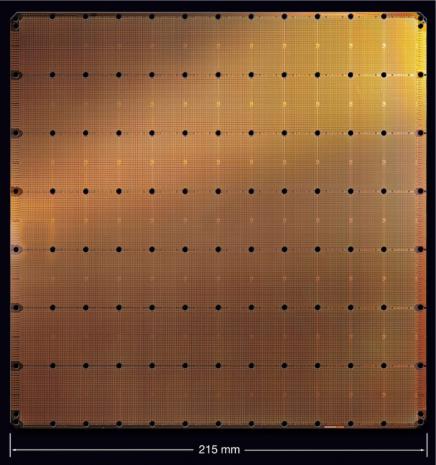
Breaking News
 HERE'S WHAT NO CASH ACTUALLY MEANS (Dave Ramsey re-post)
HERE'S WHAT NO CASH ACTUALLY MEANS (Dave Ramsey re-post)
 The Silver Shift: Why Stackers Are DUMPING 90% Silver & Buying SilverBitz!
The Silver Shift: Why Stackers Are DUMPING 90% Silver & Buying SilverBitz!
 Eye-bouncing - #SolutionsWatch
Eye-bouncing - #SolutionsWatch
 'Targeted, Antisemitism': 16 Dead, 38 Injured After Father & Son Terrorists Attack...
'Targeted, Antisemitism': 16 Dead, 38 Injured After Father & Son Terrorists Attack...
Top Tech News
 This tiny dev board is packed with features for ambitious makers
This tiny dev board is packed with features for ambitious makers
 Scientists Discover Gel to Regrow Tooth Enamel
Scientists Discover Gel to Regrow Tooth Enamel
 Vitamin C and Dandelion Root Killing Cancer Cells -- as Former CDC Director Calls for COVID-19...
Vitamin C and Dandelion Root Killing Cancer Cells -- as Former CDC Director Calls for COVID-19...
 Galactic Brain: US firm plans space-based data centers, power grid to challenge China
Galactic Brain: US firm plans space-based data centers, power grid to challenge China
 A microbial cleanup for glyphosate just earned a patent. Here's why that matters
A microbial cleanup for glyphosate just earned a patent. Here's why that matters
 Japan Breaks Internet Speed Record with 5 Million Times Faster Data Transfer
Japan Breaks Internet Speed Record with 5 Million Times Faster Data Transfer
 Advanced Propulsion Resources Part 1 of 2
Advanced Propulsion Resources Part 1 of 2
 PulsarFusion a forward-thinking UK aerospace company, is pushing the boundaries of space travel...
PulsarFusion a forward-thinking UK aerospace company, is pushing the boundaries of space travel...
 Dinky little laser box throws big-screen entertainment from inches away
Dinky little laser box throws big-screen entertainment from inches away
 'World's first' sodium-ion flashlight shines bright even at -40 ºF
'World's first' sodium-ion flashlight shines bright even at -40 ºF
Cerebras Trillion Transistor AI Wafer-Chip Crushes GPU Supercomputer by 200 Times

They had 0.86 PetaFLOPS of performance on the single wafer system.
The problem was to solve a large, sparse, structured system of linear equations of the sort that arises in modeling physical phenomena—like fluid dynamics—using a finite-volume method on a regular three-dimensional mesh. Solving these equations is fundamental to such efforts as forecasting the weather; finding the best shape for an airplane's wing; predicting the temperatures and the radiation levels in a nuclear power plant; modeling combustion in a coal-burning power plant; and or making pictures of the layers of sedimentary rock in places likely to contain oil and gas.
The massive speedup was enabled by:
1. The memory performance on the CS-1.
2. The high bandwidth and low latency of the CS-1's on-wafer communication fabric.
3. A processor architecture optimized for high bandwidth computing.
Cerebras CS-1 has the world's largest chip. It is 72 square inches (462 cm2) and the largest square that can be cut from a 300 mm wafer. The chip is about 60 times the size of a large conventional chip like a CPU or GPU. It provides much-needed breakthrough in computer performance for deep learning.
They have delivered CS-1 systems to customers around the world, where they are providing an otherwise impossible speed boost to leading-edge AI applications in fields ranging from drug design to astronomy, particle physics to supply chain optimization, to name just a few applications.



